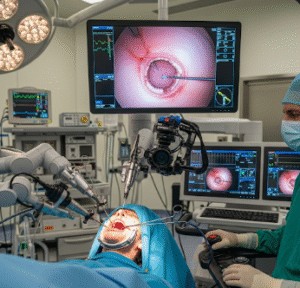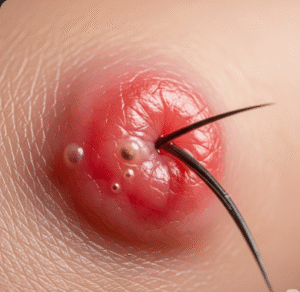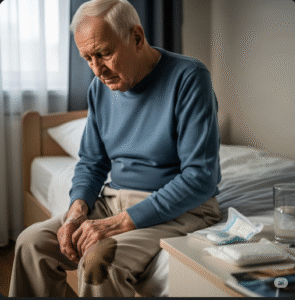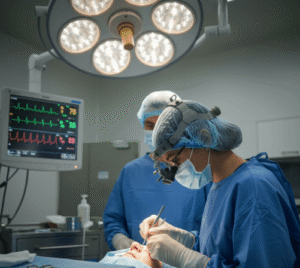Overview
Bowel cancer screening is a preventive medical process used to detect colorectal cancer (CRC) or precancerous growths in the colon or rectum before symptoms appear. Early detection significantly improves treatment outcomes and survival rates.
Importance of bowel cancer screening:
- Detects early-stage colorectal cancer when treatment is more effective.
- Identifies polyps or precancerous lesions for removal before they become malignant.
- Reduces overall mortality from bowel cancer.
- Helps guide personalized monitoring for high-risk individuals.
In South Korea, bowel cancer screening is widely promoted through national health programs, and advanced techniques are available in hospitals, endoscopy centers, and specialized clinics.
Why It’s Done
Bowel cancer screening is performed to detect cancer early or identify risk factors.
Common indications include:
- ➤ Age-based screening: Typically recommended from age 50 for average-risk individuals, sometimes earlier for high-risk groups.
- ➤ Family history: People with first-degree relatives diagnosed with colorectal cancer.
- ➤ History of polyps or inflammatory bowel disease (Crohn’s disease, ulcerative colitis).
- ➤ Symptoms like unexplained rectal bleeding, persistent changes in bowel habits, or anemia.
- ➤ Genetic syndromes: Lynch syndrome, familial adenomatous polyposis (FAP).
Benefits for patients:
- ✔️ Early detection can lead to minimally invasive treatment.
- ✔️ Prevents progression by removing precancerous polyps.
- ✔️ Reduces the need for extensive surgery or chemotherapy.
Alternatives
Various screening methods are available, depending on risk, accessibility, and patient preference:
- ➤ Fecal Occult Blood Test (FOBT): Detects hidden blood in stool.
- ➤ Fecal Immunochemical Test (FIT): Detects human hemoglobin in stool with higher specificity.
- ➤ Flexible Sigmoidoscopy: Examines the lower colon and rectum for polyps.
- ➤ Colonoscopy: Full visualization of the colon; gold standard for diagnosis and polyp removal.
- ➤ CT Colonography (Virtual Colonoscopy): Non-invasive imaging alternative for patients unable to undergo colonoscopy.
Key point: Colonoscopy is the most definitive test, but stool-based tests are non-invasive and suitable for routine screening.
Preparation
Preparation varies by screening method:
For stool-based tests (FOBT/FIT):
- ✅ Avoid certain foods and medications that may cause false positives (e.g., red meat, vitamin C supplements).
- ✅ Collect stool samples according to instructions.
For colonoscopy or CT colonography:
- ✅ Bowel cleansing: Laxatives or enemas prescribed 24–48 hours before the procedure.
- ✅ Dietary restrictions: Clear liquid diet 1–2 days before the test.
- ✅ Medication review: Adjust anticoagulants or other medications if advised.
- ✅ Consent and counseling: Discuss risks, benefits, and procedure steps.
Important: Following preparation instructions is essential for accurate results and effective screening.
How It’s Done
Screening methods vary in procedure:
1. Fecal Tests (FOBT/FIT)
- Collect a small stool sample at home.
- Submit sample to lab for hidden blood detection.
- Non-invasive and quick; results in a few days.
2. Flexible Sigmoidoscopy
- A thin, flexible tube with a camera inserted into the rectum and lower colon.
- Polyps can be visualized and removed.
- Procedure time: 10–20 minutes; usually no sedation.
3. Colonoscopy
- Full colon examination using a long, flexible camera inserted via the rectum.
- Polyps can be removed immediately, and tissue biopsies taken.
- Procedure time: 30–60 minutes; sedation usually administered.
- Gold standard for both diagnosis and prevention.
4. CT Colonography (Virtual Colonoscopy)
- Non-invasive CT scan generates 3D images of the colon.
- Polyps or masses detected; if abnormality found, colonoscopy may be required.
- Quick procedure; no sedation needed.
Comfort and safety:
- Sedation improves comfort for colonoscopy.
- Minimal discomfort for stool tests or CT colonography.
- Complications are rare but include bleeding or perforation during colonoscopy.
Recovery & Follow-up
Recovery depends on the screening method:
Stool tests:
- No recovery needed; normal activities can continue immediately.
Colonoscopy or flexible sigmoidoscopy:
- Rest until sedation wears off (1–2 hours).
- Mild bloating or cramping may occur.
- Avoid driving or heavy activities on the day of the procedure.
Follow-up:
- Normal results: Repeat screening at recommended intervals (usually 1–10 years depending on test and risk).
- Abnormal results: Colonoscopy for stool tests; polyp removal or biopsy if abnormalities detected.
- Long-term monitoring: High-risk patients may require more frequent screening.
Possible Complications
Screening is generally safe, but potential complications include:
- ⚠️ Bleeding – usually mild; may occur after polyp removal.
- ⚠️ Perforation – rare; colon wall puncture during colonoscopy.
- ⚠️ Sedation-related reactions – mild nausea, dizziness, or rarely respiratory issues.
- ⚠️ False positives or negatives – stool tests may miss some cancers or polyps.
- ⚠️ Discomfort – bloating, cramping, or temporary abdominal pain.
In South Korea, hospitals and endoscopy centers follow strict safety protocols and advanced techniques to minimize risks.
Treatment Options / Clinical Relevance in Korea
Bowel cancer screening in South Korea is part of national preventive health programs.
Key features:
- 🏥 Government-supported screening for individuals aged 50 and above.
- 🏥 Colonoscopy and stool-based tests widely available in hospitals and clinics.
- 🏥 Polyp removal and biopsy done during colonoscopy for early treatment.
- 🏥 Integration with electronic health records ensures tracking of follow-up and high-risk patients.
- 🏥 Specialized centers provide advanced imaging, sedation, and multidisciplinary care.
Hospitals and screening centers:
- Asan Medical Center – Colonoscopy and preventive care programs
- Samsung Medical Center – Advanced colon screening and polyp management
- Seoul National University Hospital – National colorectal cancer screening program
- Regional public health centers – Accessible stool-based screening
Highlights in Korea:
- ✔️ Early detection reduces mortality and morbidity from bowel cancer.
- ✔️ National programs increase access and awareness for average- and high-risk populations.
- ✔️ Advanced endoscopic technology ensures safe and effective polyp removal.
- ✔️ Long-term monitoring supports preventive and personalized care.
Highlights
- ➤ Bowel cancer screening detects colorectal cancer and precancerous polyps early, improving outcomes.
- ➤ Methods include stool tests, flexible sigmoidoscopy, colonoscopy, and CT colonography.
- ➤ Preparation varies by test, including dietary restrictions and bowel cleansing.
- ➤ Colonoscopy is the gold standard, allowing for simultaneous detection and treatment.
- ➤ Recovery is minimal, with quick return to normal activities.
- ➤ Complications are rare, including bleeding, perforation, or sedation reactions.
- ➤ South Korea provides comprehensive screening programs integrated with national health systems, ensuring safety, accessibility, and effective prevention.













